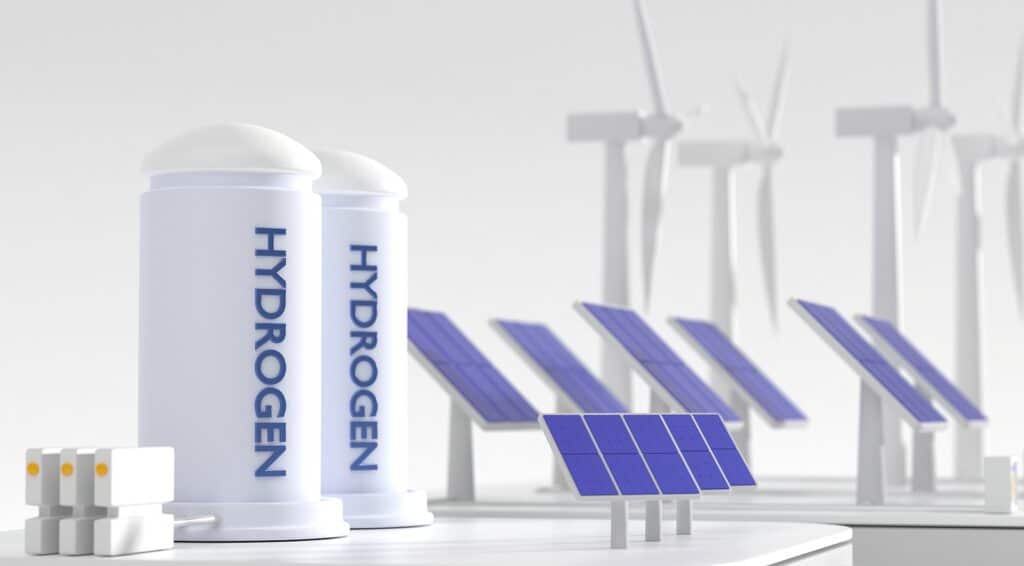As a homeowner looking to optimize my electricity consumption and ensure uninterrupted power supply, I find myself exploring innovative solutions that align with my goals. In this quest, I've discovered the remarkable potential of Containerized Energy Storage Systems (CESS). These compact and scalable systems offer a personalized approach to energy storage, allowing me to effectively manage high peak electricity demand and safeguard against power outages.
What is a Containerized Energy-Storage System?
A Containerized Energy-Storage System, often referred to by its acronym CESS, is a cutting-edge approach to energy storage, quite literally encapsulated in a modular, transportable structure. Visualize it as an immensely powerful, rechargeable shipping container battery system safely ensconced within a sturdy container.
The core essence of a CESS lies in its ability to store substantial amounts of energy, typically generated from renewable sources such as wind or solar power, or even from the grid during off-peak periods. This stored energy can then be discharged when required, providing a reliable, on-demand supply of electricity.
The container that houses this storage system is not only robust but also designed for easy transportation and installation. This means a CESS can be strategically placed where power is most needed, be it in a remote, off-grid location, at an industrial site, or within an urban energy grid. The CESS thus symbolizes a fusion of innovation, convenience, and efficiency in the world of marine energy storage system.

How Does a Containerized Energy Storage System Work?
A Containerized Energy Storage System (CESS) operates on a mechanism that involves the collection, storage, and distribution of electric power. The primary purpose of this system is to store electricity, often produced from renewable resources like solar or wind power, and release it when necessary. To achieve this, the CESS intricately combines the workings of four main components – the energy source, the charge controller, the battery bank, and the inverter.
Energy Source
The entire process initiates with the energy source. In the context of renewable energy solutions, the energy is commonly generated from solar panels or wind turbines. The CESS can also be connected to the traditional grid system to gather electricity during off-peak times when demand is low, and electricity is cheaper.
Charge Controller
Once the energy is harnessed, it undergoes regulation by a device known as the charge controller. This component's primary function is to manage the voltage and current flowing from the energy source to the battery bank. It ensures that the batteries are charged in a controlled manner, safeguarding against overcharging, which can be detrimental to the battery's health and lifespan.
Battery Bank
Subsequent to the charge controller is the battery bank where the energy is stored for future use. The type of batteries utilized can vary, but modern CESS often incorporate lithium-ion batteries, primarily due to their superior energy efficiency, long lifespan, and gradually decreasing Containerized energy storage system cost. The battery bank in a CESS is typically substantial to enable the storage of significant quantities of energy.
Inverter
The final stage of the operation begins when the stored energy is needed. This energy, stored as direct current (DC) electricity, is directed to an inverter, which transforms it into alternating current (AC) electricity. AC is the standard form of electricity used by most electrical appliances and devices, making the inverter a crucial link in making the stored energy usable.
Why Do You Need a Containerized Energy-Storage System?
In our journey towards more sustainable energy practices, Containerized energy storage system price (CESS) emerges as a significant player, offering a suite of benefits that align seamlessly with the demands of modern energy management. From reliable power supply to environmental conservation, CESS stands at the intersection of technological innovation and sustainability. Here's why they are gaining traction:
Ensuring Reliability
One of the foremost advantages of CESS is its capacity to provide a dependable power supply. As we increasingly rely on renewable energy sources like wind and solar, we encounter the challenge of intermittency – the fact that the sun doesn't always shine, and the wind doesn't always blow. CESS mitigates this issue by storing excess energy produced during peak generation times and supplying it during periods of low or no generation, thereby guaranteeing a consistent power supply.
Facilitating Scalability
The modular nature of CESS is a crucial factor in its appeal. Each container unit is a self-contained energy storage system, but they can be combined to increase capacity. This means that as your energy demands grow, you can incrementally expand your CESS by adding more container units, offering a scalable solution that grows with your needs.
Providing Mobility
The inherent design of CESS affords excellent mobility. Given that these systems are housed within sturdy, transportable containers, they can be easily relocated and installed in virtually any location, be it remote rural areas, temporary event locations, or construction sites. This feature widens the range of applications and makes CESS a versatile solution for diverse energy needs.
Mitigating Environmental Impact
CESS serves a dual role in environmental conservation. Firstly, by facilitating the integration and effective use of renewable energy sources, CESS aids in reducing reliance on fossil fuels, thereby contributing to a decrease in harmful greenhouse gas emissions. Secondly, the compact, containerized design of these systems minimizes the physical footprint and potential environmental disruption caused during installation and operation.

Case Studies of Containerized Energy Storage Systems
As the call for sustainable energy solutions amplifies globally, Containerized Energy Storage Systems (CESS) have been put into action in an array of contexts, showcasing their potential to revolutionize our energy landscape. From distant off-grid areas that grapple with accessibility issues to vibrant cityscapes juggling high energy demands, CESS has proven to be a versatile solution. Let's delve into some of these real-world deployments.
Deployment in Remote Off-Grid Locations
CESS has carved a niche for itself in remote locations where traditional energy infrastructure falls short. One such example is the deployment of a solar-powered CESS on a remote island in the South Pacific. The inhabitants of this island previously relied on diesel generators for electricity, but the logistical challenges of delivering fuel rendered this solution untenable. The introduction of a CESS enabled them to transition to a reliable, cost-effective, and sustainable energy source.
Urban Implementations
Contrary to the perception that CESS is suited only for remote or off-grid applications, it has demonstrated immense utility in urban environments as well. A striking example is a city in California that integrated a CESS into their municipal power grid. This system stores excess electricity generated during off-peak hours and discharges it during peak demand periods, reducing the strain on the grid and ensuring a consistent power supply. This deployment not only improved grid reliability but also lowering electricity costs by avoiding high peak-demand tariffs.
Industrial Use Cases
In the industrial realm, CESS has been used to manage high-energy demands effectively. For instance, a mining company in Australia deployed a CESS to reduce its reliance on diesel generators. The CESS, integrated with a solar power system, provided a steady power supply for the company's operations, reducing operational costs and environmental impact.
These case studies exemplify how CESS, with its adaptability and efficiency, can address a wide spectrum of energy needs, delivering not just power but also resilience and sustainability. The success of these applications underlines the potential of CESS to be a cornerstone of our future energy systems.

Trends and Predictions for Containerized Energy-Storage Systems
As we navigate into the future of energy management, several emerging trends signal a promising trajectory for Containerized Energy Storage Systems (CESS). Innovations in technology, shifts in economics, and progressive policy changes are likely to converge and mould the path forward for these systems.
Technological Advancements
First and foremost, we can expect technological innovations to augment the efficiency and effectiveness of CESS. Developments in battery technology, such as advancements in solid-state batteries, are poised to improve energy storage capacity and longevity. Additionally, the integration of artificial intelligence and machine learning in energy management systems could optimize charging and discharging cycles, further enhancing the performance of CESS.
Increased Accessibility and Affordability
As with any emerging technology, the economies of scale are likely to make CESS more affordable over time. As manufacturing processes become more streamlined and materials more accessible, the costs of implementing these systems should decrease. This would not only make CESS a more economically viable solution for energy storage but also increase its accessibility, opening doors for more widespread deployment in both urban and remote locations.
Stronger Policy Support
Lastly, the push for renewable energy is gaining momentum at both national and international levels, spurred by the growing urgency to mitigate climate change. Governments around the world are increasingly recognizing the pivotal role of energy storage in transitioning towards renewable energy. As such, we can anticipate stronger policy support, possibly in the form of incentives or subsidies, to promote the adoption of solutions like CESS.

Frequently Asked Questions About Containerized Energy Storage Systems
Q1: What is a Containerized Energy Storage System (CESS)?
A Containerized Energy Storage System (CESS) is essentially a large-scale battery storage solution housed within a transportable container. Designed to be modular and mobile, these systems capture and store energy for later use, making them a robust solution for energy management across a range of applications.
Q2: How does a Containerized Energy Storage System work?
A CESS operates by storing electrical energy, often generated from renewable sources like solar or wind power, and releasing it when required. It consists of four primary components: the energy source, the charge controller, the battery bank, and the inverter. The energy source provides the power that is regulated by the charge controller before being stored in the battery bank. When the stored energy is needed, it is converted from DC to AC by the inverter for standard use.
Q3: Why would I need a Containerized Energy Storage System?
There are several reasons why a CESS could be beneficial. It offers a reliable source of power, mitigating the intermittency issue associated with renewable energy sources. It's scalable, with the capacity to add more container units as your energy needs increase. Its mobility makes it suitable for use in various locations, and its compact, contained design minimizes environmental disruption. Lastly, by facilitating the use of renewable energy, it contributes to reducing greenhouse gas emissions.
Q4: Can a Containerized Energy Storage System be used in urban environments?
Absolutely! While CESS is an excellent solution for remote or off-grid locations, it's also highly applicable in urban environments. In cities, CESS can be integrated into the power grid to store excess electricity during off-peak hours and discharge it during periods of high demand, improving grid reliability and reducing electricity costs.

Q5: How do future trends impact the potential of Containerized Energy Storage Systems?
The future of CESS looks promising, with trends pointing towards technological advancements that will enhance their efficiency, increased affordability due to economies of scale, and stronger policy support as the global push towards renewable energy intensifies. These factors are likely to make CESS an increasingly popular choice for sustainable, efficient, and flexible energy storage in the coming years.
Q6: Are there any real-world examples of Containerized Energy Storage System implementations?
Yes, CESS has been successfully deployed in various contexts globally. Examples include a solar-powered CESS in a remote South Pacific island, a CESS integrated into a municipal power grid in a Californian city, and an industrial CESS used by a mining company in Australia.
Q7: What is the environmental impact of using a Containerized Energy Storage System?
CESS serves to reduce environmental impact in two primary ways. Firstly, it enables more effective integration of renewable energy sources, thereby helping to decrease reliance on fossil fuels and associated greenhouse gas emissions. Secondly, its compact, containerized design minimizes the physical footprint and potential environmental disruption during installation and operation.
Conclusion
In conclusion, as a homeowner seeking to optimize my electricity consumption and ensure uninterrupted power supply, I am intrigued by the immense potential of Containerized energy storage system pdf (CESS). The ability to effectively manage high peak electricity demand and safeguard against power outages aligns perfectly with my energy goals and lifestyle needs.
The modular and scalable nature of CESS offers me the flexibility to adapt the system to my evolving energy requirements. Whether I'm looking to shave off peak loads and reduce electricity costs or seeking a reliable emergency backup power source, CESS provides a personalized solution that meets my specific needs.
By harnessing renewable energy sources and efficiently storing excess energy, CESS enables me to reduce reliance on the grid, contribute to a greener future, and promote environmental sustainability. Furthermore, the mobility and versatility of CESS mean that I can explore various installation locations, whether in remote off-grid areas or within urban environments.

